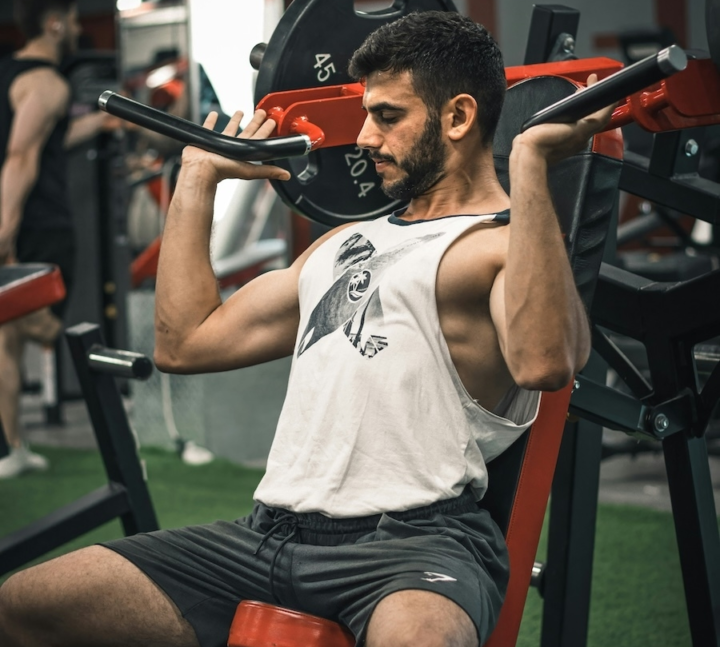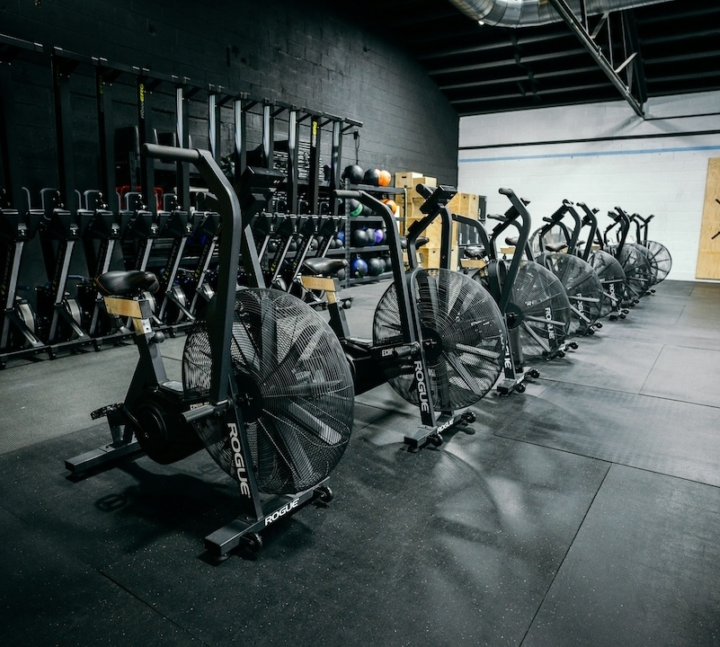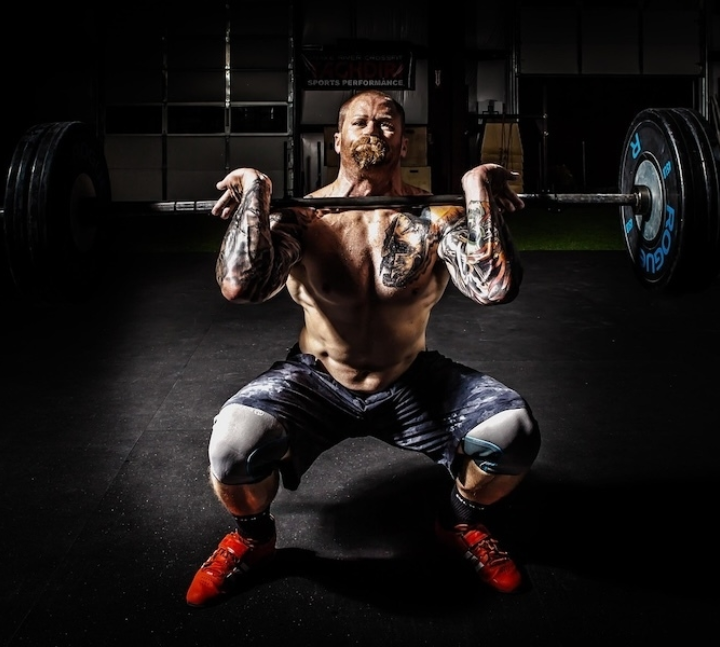Exercise
Wall balls
How to Perform - Wall balls
- Stand approximately arm's length away from a wall with your feet shoulder-width apart, toes slightly turned out, and hold a medicine ball at chest level with fingers spread wide on the sides of the ball.
- Brace your core, maintain a neutral spine, and initiate the movement by pushing your hips back while keeping your chest up as you descend into a squat position.
- Lower yourself until your thighs are at least parallel to the ground, keeping your weight in your heels and ensuring your knees track in line with your toes throughout the movement.
- Inhale during the descent, maintaining tension in your core to protect your lower back and prevent forward lean.
- From the bottom of the squat, explosively drive through your heels and extend your hips, knees, and ankles while simultaneously pushing the medicine ball upward with both arms.
- As you reach full extension, release the ball with a controlled throw toward a target point on the wall, typically 9-10 feet high, while exhaling forcefully.
- Catch the rebounding ball with soft hands at chest height, absorbing its momentum by slightly bending your elbows and allowing your arms to give.
- Immediately transition back into the squat position as you catch the ball, creating a fluid motion that connects one repetition to the next.
Important information
- Keep your chest up throughout the entire movement to maintain proper spinal alignment and maximize power transfer from your lower body to the ball.
- Ensure the medicine ball follows a vertical path during the throw, rather than being pushed forward, which prevents efficient force transfer.
- Start with a lighter medicine ball (8-10 lbs) to master the technique before progressing to heavier weights to avoid compromising form.
- If you experience wrist or shoulder discomfort, adjust your hand position on the ball or reduce the target height until your mobility improves.
Primary Muscles
Muscle Groups
Mechanic
Risk Areas
Built for progress
Take the guesswork out of training
Create personalized AI-powered workout plans that evolve with you. Train smarter, track every rep and keep moving forward, one workout at a time.






Wall balls stand as a quintessential CrossFit movement that perfectly blends strength training with cardiovascular challenge, making them a staple in HIIT workouts across fitness communities. This intermediate exercise powerfully engages multiple muscle groups simultaneously, with primary focus on the quadriceps, pectoral muscles, and abdominals, creating an efficient full-body movement that delivers maximum results in minimal time.
What makes wall balls particularly effective is their ability to simultaneously build strength and endurance while elevating your heart rate to improve cardiovascular capacity. The explosive nature of the movement mimics functional patterns we use in everyday life and sports, training your body to generate power from the ground up through a coordinated chain of muscle activation.
Fitness enthusiasts appreciate wall balls for their scalability—they can be modified by adjusting ball weight, target height, or rep scheme to accommodate different fitness levels while still maintaining the core benefits of the exercise. The movement's compound nature means you're strengthening your quads, developing chest power, and reinforcing core stability all within a single fluid motion.
For those focused on CrossFit performance, wall balls frequently appear in benchmark workouts and competitions, making them an essential skill to master. Meanwhile, HIIT devotees value them for their ability to quickly spike heart rate and contribute to the metabolic "afterburn" effect that continues calorie expenditure post-workout.
Regular incorporation of wall balls into your training regimen can lead to noticeable improvements in lower body power, upper body pushing strength, core endurance, and overall work capacity. This exercise embodies the efficiency that modern fitness enthusiasts seek—delivering strength, endurance, and cardiovascular benefits in one challenging movement that continues to be a cornerstone in functional fitness programming worldwide.
FAQ - Wall balls
Wall balls are a compound movement that primarily engage the quadriceps, glutes, shoulders, and triceps during the squat and throw motion, while also activating your core muscles throughout the entire movement for stabilization. The exercise effectively works your posterior chain during the squat portion and your pushing muscles during the throw phase.
Stand 2-3 feet from a wall with feet shoulder-width apart, holding a medicine ball at chest level. Drop into a full squat with thighs parallel to the ground, then explosively drive upward, throwing the ball to the target height (typically 9-10 feet for men, 8 feet for women). Catch the rebounding ball with soft hands as you immediately descend into your next squat.
Beginners can use a lighter medicine ball (4-8 lbs), reduce the target height, or perform partial squats until building sufficient strength. To increase difficulty, use a heavier ball (14-20 lbs), increase the target height, slow down the eccentric (lowering) phase, or incorporate wall balls into high-intensity intervals with minimal rest between sets.
The three most common mistakes are not achieving proper squat depth (thighs should reach parallel), throwing with primarily the arms instead of driving through the legs, and standing too close to the wall which creates an awkward throwing angle. Also watch for core disengagement that causes excessive arching in the lower back during the throwing phase.
For balanced fitness development, incorporate wall balls 2-3 times weekly with at least 24-48 hours between sessions to allow for muscle recovery. They work well as part of metabolic conditioning circuits, as a strength-endurance finisher, or programmed in moderate sets of 10-20 repetitions depending on your fitness goals and current conditioning level.












